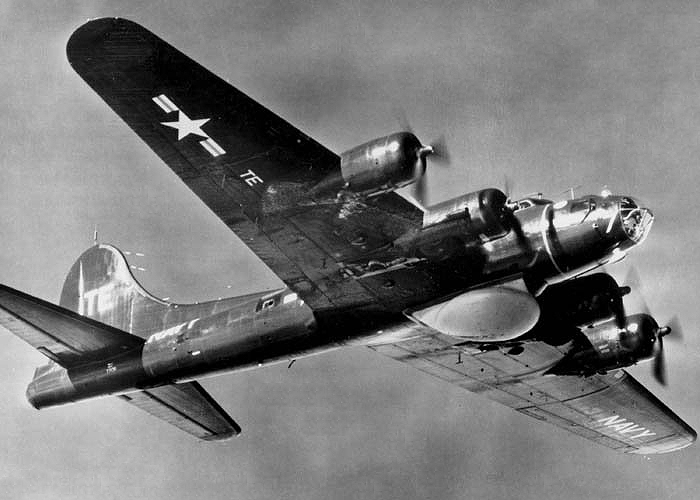|
Texas Raiders
''Texas Raiders'' was an American Boeing B-17 Flying Fortress, a B-17G-95-DL built by Douglas-Long Beach. In 1967, it was purchased by the Commemorative Air Force’s Gulf Coast Wing "Texas Raiders" group, which maintained and flew the aircraft out of Conroe-North Houston Regional Airport in Conroe, Texas. The aircraft was destroyed on November 12, 2022, by a mid-air collision with a P-63 Kingcobra at an air show at Dallas Executive Airport, Texas, that killed all five occupants and the P-63 pilot. History of the aircraft Early history The plane was built in 1944 by Douglas Aircraft Corporation at the Long Beach, California, plant under license from Boeing. One of the last 20 B-17s built by Douglas, it was delivered to the U.S. Army Air Forces as B-17G-95-DL 44-83872 on July 12, 1945. On July 21, 1945, all 20 were transferred to the U.S. Navy to serve as PB-1W patrol bombers. 44-83872 was assigned the U.S. Navy Bureau of Aeronautics Number (BuNo) 77235. The Navy used PB-1W ... [...More Info...] [...Related Items...] OR: [Wikipedia] [Google] [Baidu] |
Gulf Coast Wing
{{Short description, United States historical air display organization The Gulf Coast Wing of the Commemorative Air Force is a United States historical air display organization which formerly included two sub-groups that participate in the display of vintage aircraft and public military history education about military aviation during World War II and beyond. "Texas Raiders" group The Commemorative Air Force's Gulf Coast Wing encompassed the "Texas Raiders" group, who maintained and operated the Boeing B-17G Flying Fortress (former U.S. Navy PB-1W) named ''Texas Raiders'', which 2022 Dallas airshow collision, crashed on November 12, 2022. It was based at the Conroe Regional Airport, located in Conroe, Texas. (Formerly based at David Wayne Hooks Memorial Airport in Tomball, Texas.) See also * History of transport External linksCommemorative Air Force [...More Info...] [...Related Items...] OR: [Wikipedia] [Google] [Baidu] |
Boeing B-17 Flying Fortress
The Boeing B-17 Flying Fortress is a four-engined heavy bomber developed in the 1930s for the United States Army Air Corps (USAAC). Relatively fast and high-flying for a bomber of its era, the B-17 was used primarily in the European Theater of Operations and dropped more bombs than any other aircraft during World War II. It is the third-most produced bomber of all time, behind the four-engined Consolidated B-24 Liberator and the multirole, twin-engined Junkers Ju 88. It was also employed as a transport, antisubmarine aircraft, drone controller, and search-and-rescue aircraft. In a USAAC competition, Boeing's prototype Model 299/XB-17 outperformed two other entries but crashed, losing the initial 200-bomber contract to the Douglas B-18 Bolo. Still, the Air Corps ordered 13 more B-17s for further evaluation, then introduced it into service in 1938. The B-17 evolved through numerous design advances but from its inception, the USAAC (later, the USAAF) promoted the aircraft a ... [...More Info...] [...Related Items...] OR: [Wikipedia] [Google] [Baidu] |
Patrol Bomber
A maritime patrol aircraft (MPA), also known as a patrol aircraft, maritime reconnaissance aircraft, or by the older American term patrol bomber, is a fixed-wing aircraft designed to operate for long durations over water in maritime patrol roles — in particular anti-submarine warfare (ASW), anti-ship warfare (AShW), and search and rescue (SAR). Among other maritime surveillance resources, such as satellites, ships, unmanned aerial vehicles (UAVs) and helicopters, the MPA is an important asset. To perform ASW operations, MPAs typically carry air-deployable sonar buoys as well as torpedoes and are usually capable of extended flight at low altitudes. History First World War The first aircraft that would now be identified as maritime patrol aircraft were flown by the Royal Naval Air Service and the French Aéronautique Maritime during the First World War, primarily on anti-submarine patrols. France, Italy and Austria-Hungary used large numbers of smaller patrol aircraft ... [...More Info...] [...Related Items...] OR: [Wikipedia] [Google] [Baidu] |


.jpg)